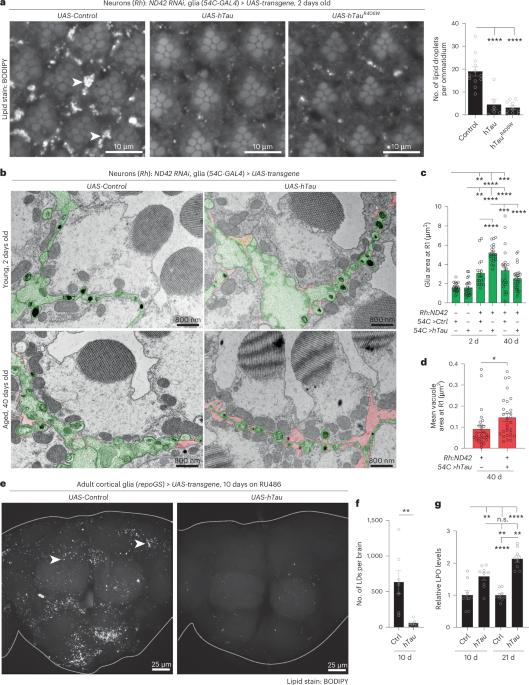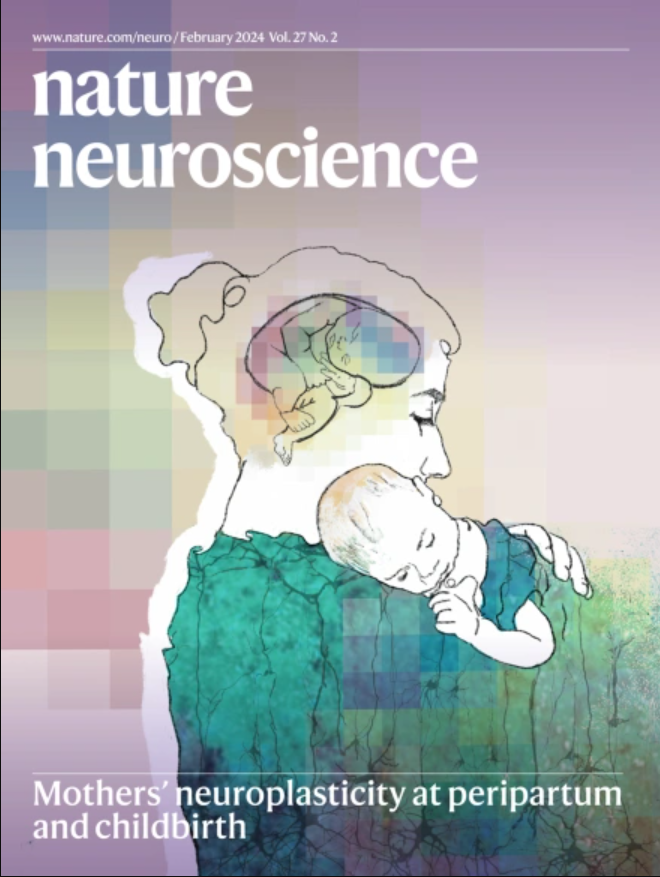Tau is required for glial lipid droplet formation and resistance to neuronal oxidative stress
IF 21.2
1区 医学
Q1 NEUROSCIENCES
引用次数: 0
Abstract
The accumulation of reactive oxygen species (ROS) is a common feature of tauopathies, defined by Tau accumulations in neurons and glia. High ROS in neurons causes lipid production and the export of toxic peroxidated lipids (LPOs). Glia uptake these LPOs and incorporate them into lipid droplets (LDs) for storage and catabolism. We found that overexpressing Tau in glia disrupts LDs in flies and rat neuron–astrocyte co-cultures, sensitizing the glia to toxic, neuronal LPOs. Using a new fly tau loss-of-function allele and RNA-mediated interference, we found that endogenous Tau is required for glial LD formation and protection against neuronal LPOs. Similarly, endogenous Tau is required in rat astrocytes and human oligodendrocyte-like cells for LD formation and the breakdown of LPOs. Behaviorally, flies lacking glial Tau have decreased lifespans and motor defects that are rescuable by administering the antioxidant N-acetylcysteine amide. Overall, this work provides insights into the important role that Tau has in glia to mitigate ROS in the brain. Goodman et al. found that Tau is critical for ROS-induced lipid droplet formation in glia from flies and mammals. Too much or too little glial Tau disrupts lipid droplets, leaving the glia susceptible to neuronal ROS-induced damage and causing phenotypes in tau−/− flies.


神经胶质细胞脂滴的形成和抵抗神经元氧化应激需要 Tau。
活性氧(ROS)的积累是神经元和胶质细胞中Tau积累所定义的tau病的一个共同特征。神经元中的高ROS会导致脂质生成和有毒过氧化脂质(LPO)的输出。胶质细胞吸收这些过氧化脂质,并将其纳入脂滴(LDs)进行储存和分解。我们发现,在神经胶质细胞中过表达 Tau 会破坏苍蝇和大鼠神经元-胃细胞共培养物中的 LDs,使神经胶质细胞对有毒的神经元 LPOs 敏感。利用一种新的蝇tau功能缺失等位基因和RNA介导的干扰,我们发现神经胶质细胞LD的形成和对神经元LPO的保护需要内源性Tau。同样,大鼠星形胶质细胞和人类少突胶质细胞也需要内源性 Tau 来形成 LD 和分解 LPO。从行为学角度看,缺乏神经胶质 Tau 的苍蝇寿命缩短,运动机能出现缺陷,但通过服用抗氧化剂 N-乙酰半胱氨酸酰胺可以挽救这些缺陷。总之,这项研究深入揭示了 Tau 在胶质细胞中缓解大脑中 ROS 的重要作用。
本文章由计算机程序翻译,如有差异,请以英文原文为准。
求助全文
约1分钟内获得全文
求助全文
来源期刊

Nature neuroscience
医学-神经科学
CiteScore
38.60
自引率
1.20%
发文量
212
审稿时长
1 months
期刊介绍:
Nature Neuroscience, a multidisciplinary journal, publishes papers of the utmost quality and significance across all realms of neuroscience. The editors welcome contributions spanning molecular, cellular, systems, and cognitive neuroscience, along with psychophysics, computational modeling, and nervous system disorders. While no area is off-limits, studies offering fundamental insights into nervous system function receive priority.
The journal offers high visibility to both readers and authors, fostering interdisciplinary communication and accessibility to a broad audience. It maintains high standards of copy editing and production, rigorous peer review, rapid publication, and operates independently from academic societies and other vested interests.
In addition to primary research, Nature Neuroscience features news and views, reviews, editorials, commentaries, perspectives, book reviews, and correspondence, aiming to serve as the voice of the global neuroscience community.
 求助内容:
求助内容: 应助结果提醒方式:
应助结果提醒方式:


